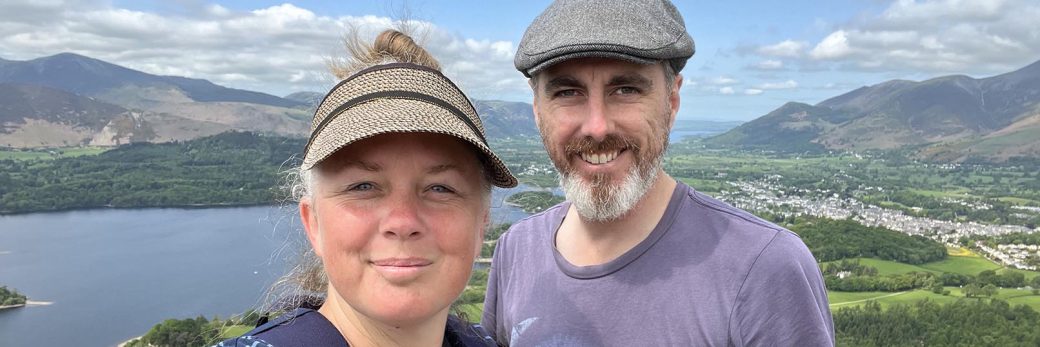
Our overnight trip to Derry did not begin well, due to the uniquely confusing setup at Lanyon Place Station. We managed to miss the 10am train and had to wait an hour for the next one. Annoying, but possibly meant we missed the morning rain in Derry.
The trip to Derry is about 2 hours and as we got closer the sun came out and we hit the coastal section of the route. Lovely!

There was even a stretch of beach that looked remarkably like home.

We arrived at Derry station a bit after 2 and the station was a pleasant surprise. Very modern, clean and bright.

The station is on the opposite side of the river to the centre of town so we walked across the Peace Bridge.

We’d booked an Airbnb property but only brought a small backpack each so we were fine to carry our things with us for a few hours.
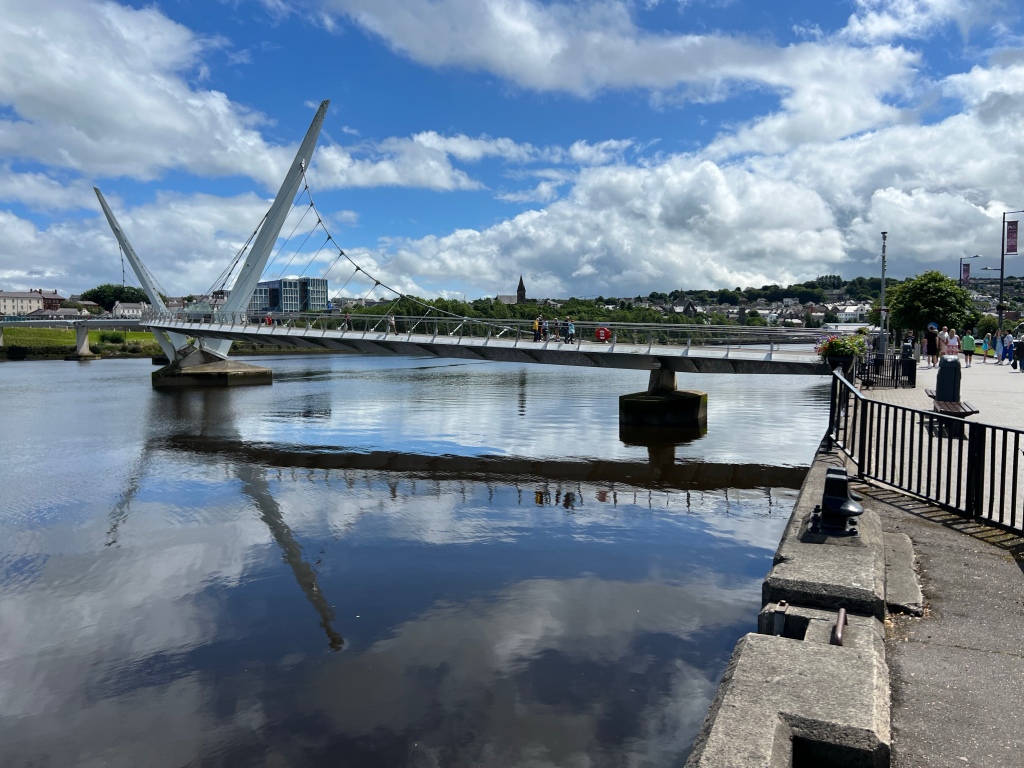
On a day like this it was a nice way to enter the city, although it was still spitting a bit… but also sunny. So Irish!
There was a nice-looking walkway along the river but we headed into the city.

Not many people around, which is always nice.
We headed into the ground floor of the building below. I was interested in the stained glass. I read later that the windows tell the story of Derry through the centuries.


There was an exhibition on the history of Derry, which I can poorly but fairly accurately summarise as: English people arrive and ruin everything and the fighting goes on forever. Luke and I talked about this a lot, not just what happened but what could’ve been done differently, what might have happened if the English had never come. Ireland is so small that it might’ve been invaded by Spain or Portugal, or how different it would be if it had been left to itself. Is there even such a thing, in history, as a nation being left to itself?
I didn’t realise the English came to completely drive out the locals in the 1600s to set up plantations, much like those in the US and the Caribbean, although I think this happened first.

Next we visited the tourist information centre and picked up a map. They had a lot of Derry Girls merch and some interactive exhibits.

The craft village was recommended to visit, it’s a series of little craft shops that sell very typical Irish stuff, some more modern things and several hairdressers. Not the highlight of our visit but it might appeal to some.

The centre of Derry is surrounded by defensive walls, the mostly recently constructed in the UK and Ireland. They’re in excellent condition and the wall around is about a mile and offers an excellent view of the inside and outside parts of the city.

The wall walk was also surprisingly wide and the surface seemed quite new. There were sets of stairs along the way but it wasn’t a hard walk.


If you don’t immediately recognise these faces you need to watch Derry Girls immediately. Go do it now, I’ll wait.
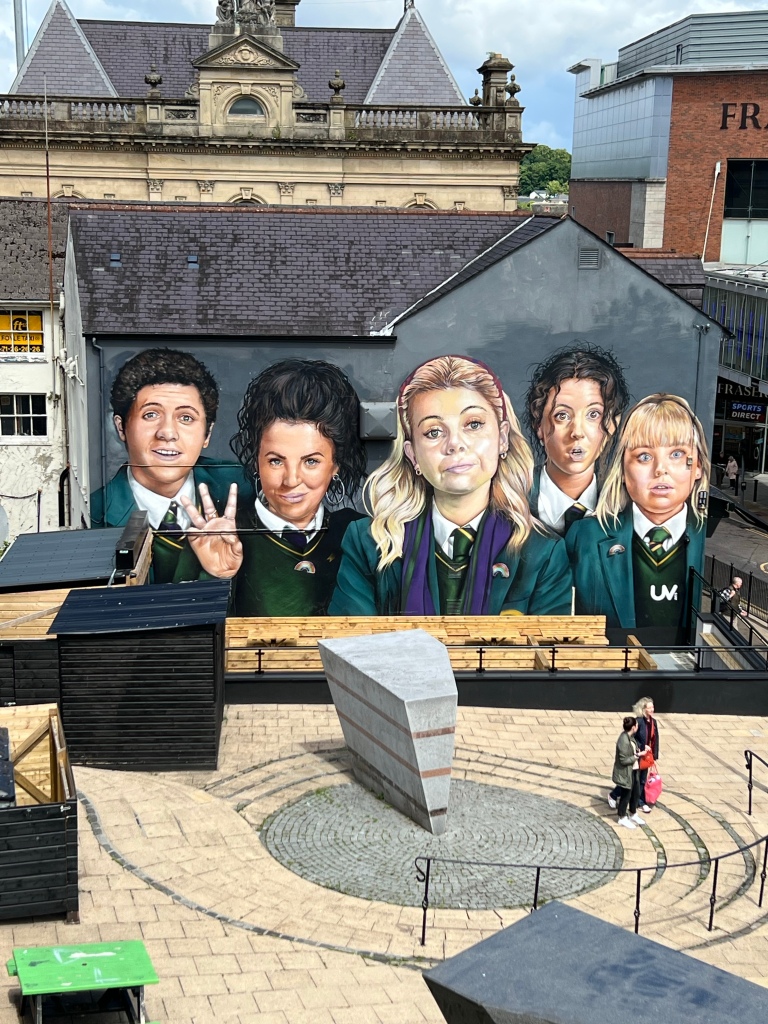
After all the walking in the sun there was only one thing to do.
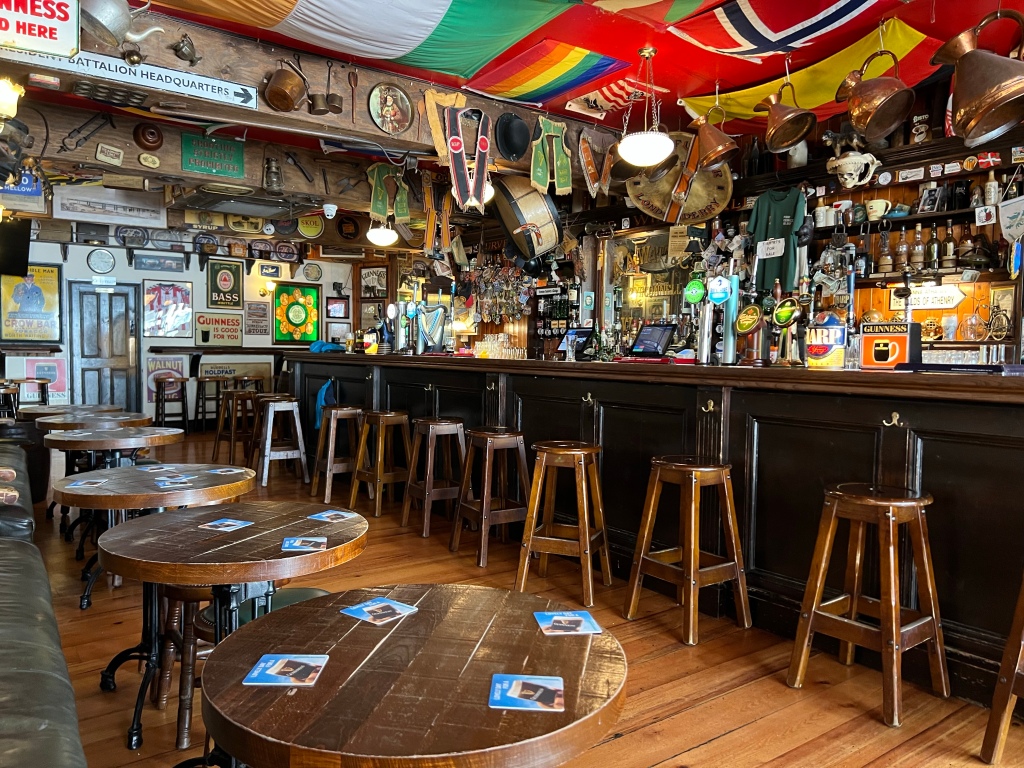
We stopped in at Peaddar O’Donnall’s for a drink and to listen to the old men at the end of the bar talk about what a good movie The Mighty Ducks was.
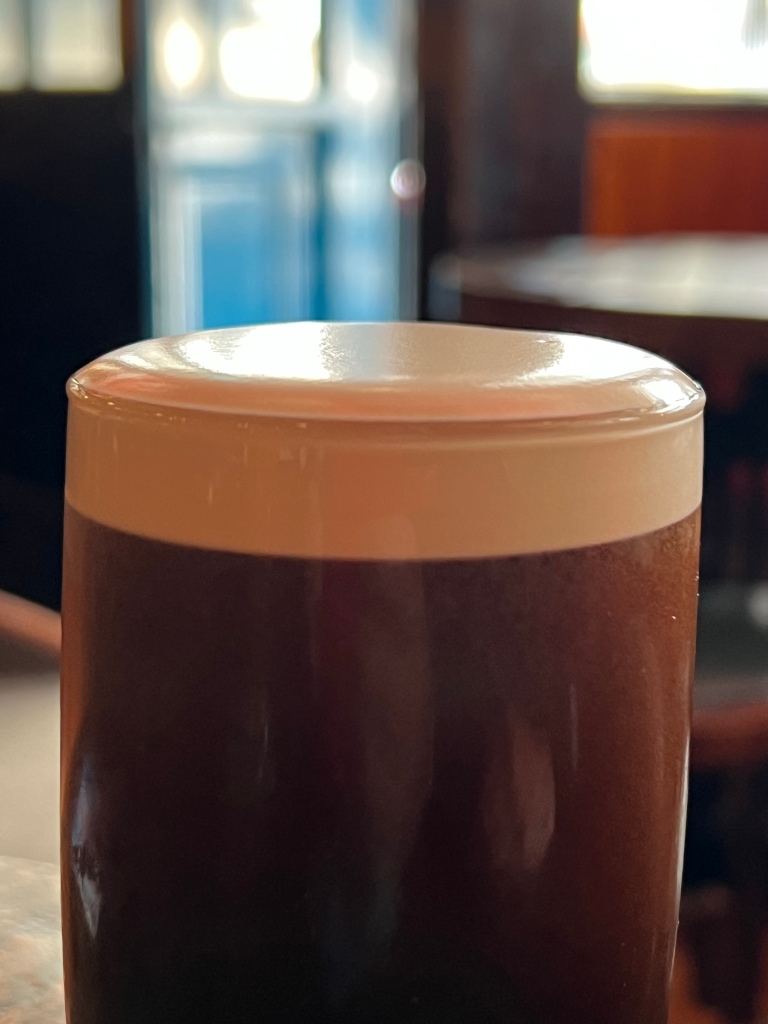
I had to photograph the place below. We didn’t eat there but I enjoyed their scattergun approach to punctuation.

Another photo of Northern Irish library architecture. It looks like a very defensible structure.

Before heading to the Airbnb we walked to the Free Derry area to have a look at the murals.

The old style, then the new below.

Our Airbnb was back over the peace bridge in the newer part of town.

After going through this door we had to let ourselves out the back door into a grim alley then down to a little apartment that was sparse but felt pretty new and was clean.

Plus they left us bread, butter and everything for tea and coffee so we were set. Back to the pub.

There were a bunch of pubs in a row so of course we went back to the same one we were at before. We had an hour to kill before dinner at Mekong, Derry’s top rated restaurant.

An unprepossessing exterior but the food was unreal. We ordered a range of smaller plates to share.


The flavours were amazingly fresh and rich, with each dish having a unique taste but all tasting very Vietnamese. It was really hard to pick a favourite.
Dessert was a mandarin crème brûlée with ginger biscuit, which we used to dip in the brûlée and then crumbled over the top. I had a very sad moment at the end when I realised I’d probably never eat here again. We both agreed it was one of the top five meals we’d had on this trip.

In the morning we started with a morning walk through St Columb’s park. It was a nice big green space with just one creepy statue.




After a walk through town we went to the Free Derry Museum. Before entering I knew very little about Bloody Sunday but the museum was extremely informative and had artifacts from the day, footage and recordings.
If you go take a box of tissues, it’s tragic on so many levels and really makes you sympathise with the people of Derry.

On our way to the station we bought some fancy biscuits from this very instagramable shop then forgot to eat them.

We saw some fancy cars on the way.

Back over the Peace Bridge and to the station.

On the way home we got off the train at Castlerock, a little seaside town. We had a slightly underwhelming lunch at a local bar but the staff were very friendly.

Not as friendly as local character Ronnie, who wandered over as we finished eating and told us about basking sharks, how he had dropped his cornflakes on the floor that morning, and swimming in Greece. Having an extremely thick accent meant he was quite hard to understand but we concentrated very hard and seemed to make all the right noises.

We had a nice walk along the beach in the warm, windy weather and stopped to take a few photos before heading back to the station.

The trip back to Belfast was largely uneventful apart from the train running a bit late.

The weekend just gone has been very busy so this has been my most delayed post of the trip! We’ve done a few things over the weekend so I’ll to to finish everything off before leaving London. Only a couple of sleeps until we are home!
